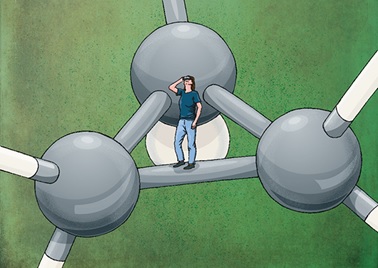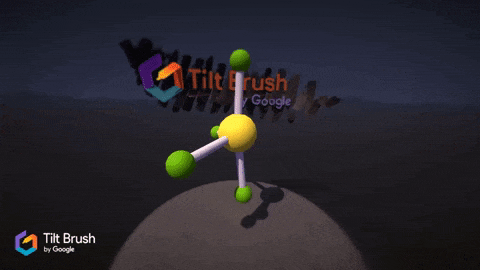Prof Simon Lancaster leads a group advancing the teaching of Chemistry in Higher Education.
Their research interests include approaches to increase student engagement in the lecture theatre, using social media to share and broadcast undergraduate teaching as creative events and the application of immersive and augmented virtual reality technologies to help spatial awareness.
We recognise that many students begin a chemistry degree finding it difficult to make the connection between two-dimensional representations on a textbook page or blackboard and what they are told is the three-dimensional reality. What do those hashes and wedges we see so often mean in reality? In chemistry education, the symbolism of the hashes and wedges and the three dimensional microscopic shape of the molecule are two corners of Johnstone’s triangle. The third corner is the macroscopic properties of the molecule.

Credit: Carl Conway / Springer Nature Limited
One of the enduring challenges in teaching chemistry is showing students how to traverse between symbolic representation and three dimensional shape and how they affect molecular properties (Lancaster, S.J. Immersed in virtual molecules. Nat Rev Chem 2, 253–254 (2018)). Traditionally lecturers have taken recourse to illusions of depth or molecular models. Virtual reality allows us to do things we could not dream of with physical molecular models: we can overlay them, make the atoms as big as our heads and literally look along the bonds. We believe that immersive virtual reality has the potential to transform the teaching of chemistry.
Our research students at final year undergraduate and doctorate level are working to identify and solve the visualisation challenges faced by new chemistry students. We are looking forward to a near future in which we can apply the lessons learnt from immersive virtual reality to drive tutorials in which our students and tutors share their teaching spaces with augmented virtual reality molecules.
By its very nature, immersive virtual reality cannot be directly embedded on a web-page. However, we find that by sharing “fly-by” videos on our virtual learning environment we can use immersive virtual enhance the learning experience of browsing students.

:focus(754x419:755x420))